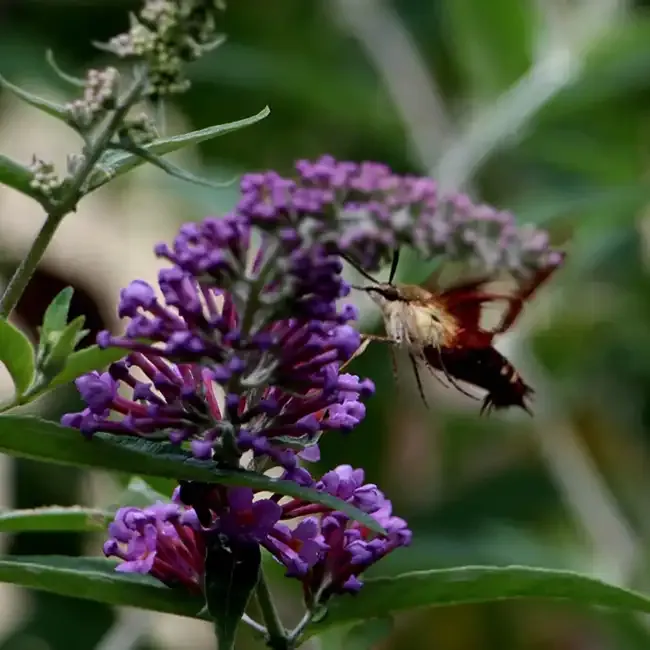
The Butterfly Bush (Buddleja spp.), also known as Buddleia, is a popular ornamental shrub cherished for its vibrant and fragrant flowers. This plant is particularly beloved by gardeners for its ability to attract pollinators, especially hummingbirds and butterflies, making it a dynamic addition to any garden. Although not native to North America, the Butterfly Bush has become a common sight in many gardens across the continent.
Native Region
The Butterfly Bush is native to parts of Asia, Africa, and the Americas, depending on the species. The most commonly grown species in gardens, Buddleja davidii, originates from China. Over time, various species and hybrids have been introduced to other regions, where they have become popular ornamental plants.
A Top Hummingbird Attractor
One of the main reasons the Butterfly Bush is a favorite among gardeners is its ability to attract hummingbirds. The plant produces large clusters of small, tubular flowers that are rich in nectar, making them an irresistible food source for hummingbirds. The flowers come in a range of colors, including purple, pink, white, and yellow, and their sweet fragrance further enhances their appeal to pollinators.
Soil and Moisture Requirements
The Butterfly Bush is a resilient plant that thrives in well-drained soil. It prefers slightly alkaline to neutral soil but can adapt to a wide range of soil types as long as they are not overly acidic or waterlogged. Here are the key requirements:
- Soil: Well-drained, slightly alkaline to neutral soil. It can tolerate poor soil conditions but performs best in nutrient-rich soil.
- Moisture: While the Butterfly Bush is drought-tolerant once established, it prefers moderate watering. Ensure the soil is well-drained, as waterlogged conditions can lead to root rot. During prolonged dry periods, additional watering may be necessary to maintain the plant's vigor and flowering capacity.
Tips for Caring for Butterfly Bush
- Planting Location: Choose a sunny spot in your garden, as the Butterfly Bush thrives in full sun, which encourages prolific blooming. It can tolerate some light shade, but flowering may be reduced.
- Pruning: Prune the Butterfly Bush in late winter or early spring before new growth begins. This encourages the plant to produce more flowers and helps maintain its shape. Cutting back the plant to about 12 inches from the ground can rejuvenate older plants.
- Fertilization: While not a heavy feeder, applying a balanced fertilizer in early spring can promote healthy growth and abundant flowering. Avoid over-fertilizing, as this can lead to excessive foliage growth at the expense of flowers.
- Mulching: Apply a layer of mulch around the base of the plant to help retain moisture and suppress weeds. This is particularly beneficial during the hot summer months.
- Pest and Disease Management: The Butterfly Bush is relatively pest-free, but it can occasionally suffer from spider mites, aphids, or root rot if overwatered. Monitor the plant regularly and take action if pests are detected. Ensure proper spacing to promote good air circulation and reduce the risk of fungal diseases.
- Deadheading: Regularly remove spent flowers (deadheading) to encourage continuous blooming throughout the growing season. This also prevents the plant from self-seeding, which can be a concern in some regions where the Butterfly Bush is considered invasive.
The Butterfly Bush is a versatile and low-maintenance shrub that adds beauty and life to any garden. With its ability to attract hummingbirds and butterflies, along with its stunning flowers and easy care requirements, it’s an excellent choice for gardeners looking to create a vibrant and wildlife-friendly landscape. By providing the right conditions and proper care, you can enjoy the benefits of this attractive shrub for years to come.
